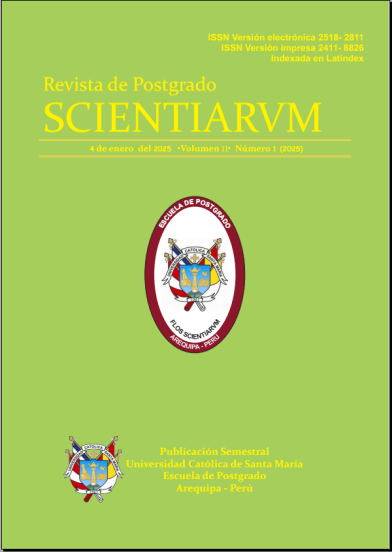FACTORES ASOCIADOS Y SEROPREVA,LENCIA DE VIH, SIFILIS, HEPATITIS B Y C EN LA POBLACION PENITENCIARIA DE AREQUIPA, MOQUEGUA Y TACNA, PERU 2017
RESUMEN: Objetivo: Determinar factores relacionados a la seroprevalencia de VIH, Sífilis, Hepatitis B y C en la población penitenciaria de Arequipa, Moquegua y Tacna, Perú 2017.
Materiales y métodos: Se realizó un estudio transversal entre Julio 2015 hasta febrero 2017. Se firmó convenio con la Oficina Regional Sur del Instituto Nacional Penitenciario (INPE-ORSA). Se difundió el proyecto entre los internos de los penales y se firmaron consentimientos informados, se aplicaron entrevistas para establecer factores relacionados y se tomaron muestras de sangre para determinar VIH, sífilis, Hepatitis B y C con pruebas ELISA desarrolladas por el laboratorio del Hospital Regional Honorio Delgado de Arequipa. Con sensibilidad y especificidad por encima del 99%.
Resultados: Se trabajó con 500 internos de los penales del sur del Perú. La edad promedio fue de 34.5 años, 87.6 % de reclusos son varones y el 12.4 % mujeres. El 59.0% son personas adultas (de 30 a 59 años). La mayoría de mujeres es conviviente (54.8%) y de varones solteros (56.4%). 61.4% de los internos procedían de Arequipa, 12.6% de Tacna y 6.6 % de Moquegua.
El 15.2% presentó alguna ETS, 17.7% de mujeres y 14.8% de varones, con relación significativa entre sexo femenino y ETS. El 8.4% presentó sífilis. El 1.2% era VIH positivo. El 7.0% presentó hepatitis B. Ningún interno tuvo hepatitis C. Se halló 3.8% de homosexuales, encontramos relación significativa entre tendencia homosexual y ETS positiva. 67% de internos tuvieron relaciones sexuales al interior del penal. La penetración vaginal fue la más común (73.1%). Hay relación significativa entre penetración anal y ETS. El 89% tuvieron RS con visitas, y el restante con internos o ambas. El 58% no utilizan preservativo, el 63.8% de usuarios de preservativo lo obtienen del tópico del penal. 37.3% de los que tienen relaciones sexuales en el penal refieren haber pagado por sexo. El 9% de presos admite consumir alcohol en el penal. El 10.8% de reos consume drogas, 1.6% en mujeres y 12.1% en varones. Las drogas de mayor consumo son marihuana y cocaína. 14.4% de internos refiere haber sido donante de sangre. Conclusiones: En los penales del sur se halló que hay casi tres veces mayor frecuencia de ETS que en la población en general, encontramos una mayor frecuencia de mujeres con sífilis y VIH y de hombres con VHB. No encontramos infección por Hepatitis C. Existen algunos factores asociados a las ETS, como son: homosexualidad, relaciones anales y mantener RS en el penal.
Palabras clave: VIH,//SIDA, Sífilis Hepatitis B, Hepatitis C, Enfermedades de Transmisión Sexual (ETS), Factores Relacionados, Relaciones sexuales (RS), Presos (internos), Penales, Instituto Nacional Penitenciario (INPE).
ABSTRACT: Objective: To determine factors related to seroprevalence of HIV, Syphilis, Hepatitis B and C in the penitentiary population of Arequipa, Moquegua and Tacna, Peru 2016.
Materials and methods: A cross sectional study was made between July 2015 and February 2017. An agreement was signed with the Southern Regional Office of the National Penitentiary Institute (INPE-ORSA). The project was announced among prisoners and informed consents were signed, interviews were conducted to establish related factors and blood samples were taken to determine HIV, syphilis, Hepatitis B and C with ELISA tests developed by the laboratory of Regional Hospital Honorio Delgado of Arequipa, with sensitivity and specificity above 99%.
Results: We worked with 500 prisoners from southern Peru. The average age was 34.5 years, 87.6% of inmates were male and 12.4% were female. 59.0% are adults (30 to 59 years). The majority of women are cohabiting (54.8%) and single men (56.4%). 61.4% of inmates came from Arequipa, 12.6% from Tacna and 6.6% from Moquegua.
The 15.2% had any STDs, 17.7% of women and 14.8% of men, with a significant relationship between female sex and STDs. 8.4% had syphilis. 1.2% was HIV positive. 7.0% had hepatitis B. No inmates had hepatitis C. We found 3.8% of homosexuals, we found a significant relationship between homosexual tendency and positive STD. 67% of inmates had sexual intercourse inside the prison. Vaginal penetration was the most common (73.1%). There is a significant relationship between anal penetration and ETS. 89% had sexual relations with visits and the rest with inmates or both. 58% do not use condoms, 63.8% of condom users obtain it from the topic of the jail. 37.3% of those who have sex in the penitentiary reported that they have been paying for sex. 9% of prisoners consume alcohol in the prison. 10.8% of inmates use drugs, 1.6% in women and 12.1% in men. The drugs of greatest consumption are marijuana and cocaine. 14.4% of inmates report having been a blood donor.
conclusions: In the southern prisons we found that there is almost three times more frequency of STDs than in the general population; we found a higher frequency of women than men in general in STDs investigated. We did not find infection of Hepatitis C. There are some factors associated with STDs like: homosexuality, anal relations, maintains sexual relations in the prison.
Keywords: HIV, // AIDS, Syphilis Hepatitis B, Hepatitis C, Sexually Transmitted Diseases (STDs), Related Factors, Sexual Relations, Prisoners (inmates), Prisons, National Penitentiary Institute (INPE).
Revista Seleccionada
Enero 2018 Volumen 4 - Número 1 P 31-40
DOI: 10.26696/sci.epg.0069
Enlaces
CIENCIAS SOCIALES Y HUMANIDADES
LOS DERECHOS DEL INIMPUTABLE PENAL
CIENCIAS BIOLÓGICAS Y DE SALUD
ENVEJECIMIENTO HUMANO EXITOSO: CAUSAS Y EFECTOS
OBESIDAD/SOBREPESO, DIETA Y ACTIVIDAD FISICA EN ESCOLARES DE 5 A 10 AÑOS, AREQUIPA, PERU, 2015
AUTOREPORTE DE MALOCLUSIONES DENTALES EN ESCOLARES DE 12 AÑOS DE UN CANTÓN RURAL EN ECUADOR
PREVALENCIA DE MAL OCLUSIONES DENTALES EN ESCOLARES DE LA PARROQUIA EL BATAN ECUADOR


